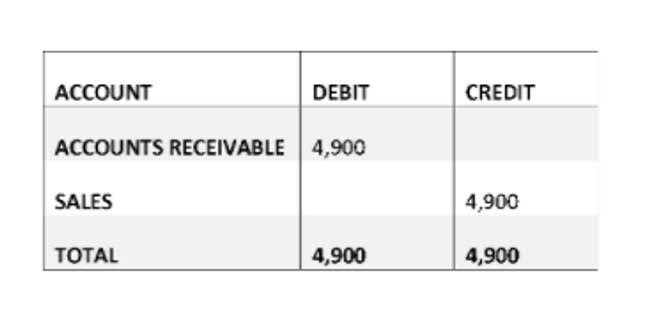
A correcting entry is a journal entry used to correct a previous mistake. A transaction that incorrectly uses an accounting principle is called an error of principle. Errors of principle don’t meet the generally accepted accounting principles (GAAP).
- Implement a system to catch and correct errors promptly to avoid creating more problems for yourself.
- It allows you to validate all the information on your books, sort of like a double-check before closing.
- The errors of transposition are one of the accounting errors that incur as a result of the wrong digit of the number has been accidentally recorded the other way round.
- When an entry is debited instead of being credited, or vice versa, this is an error of reversal.
- I record the following correcting journal entry to decrease both the utilities expense and accounts payable by $45.
- While this example illustrates a simple, everyday scenario, it underscores the importance of accuracy and thoroughness in financial record-keeping.
If the entry is occurring in data capture forms, databases or subscription forms, the designer of the forms should use input masks or validation rules. There are many ways to prevent and spot accounting errors before they can slow you up. The main point to remember when looking for accounting errors is maintaining the essential bookkeeping principles.
Create a Free Account and Ask Any Financial Question
But when working with calculating a lot of numbers, I often mixed them up. Number switching isn’t a problem that I see all that often, but I have had it come up a few times over the years. When we see students making this mistake, it becomes a valuable teaching opportunity.
Typically, we can detect such errors by taking the difference between debits and credits and divide it by 9. If such difference can be divided exactly by https://www.bookstime.com/ 9, the error would be the errors of transposition. Error in accounting or accounting error is the omission or misstatement in the financial statements.
Omission errors
This content is for information purposes only and should not be considered legal, accounting, or tax advice, or a substitute for obtaining such advice specific to your business. No assurance is given that the information is comprehensive in its coverage or that it is suitable in dealing with a customer’s particular situation. A particular example of an error of original entry is a transposition error where the numbers are not entered in the correct order. For example, if cash paid to a supplier of 2,140 was posted as 2,410 then the correcting entry of 270 would be. Both debit which is accounts receivable and credit, sales revenue, has been recorded as $5,706.
This is an example of a transposition error, where the digits are reversed in the amount. A payment of $89 was journalized for a telephone bill as a debit to a telephone expense account by $98. Another accounting error is a principle error, where an accounting entry violates a fundamental accounting principle. The potential impact of a data entry error can vary from something minor like a spelling error to a major mishap such as underpayment or overpayment of a vendor.
Closing error
An accounting error of commission can occur when an item is entered to the correct type of account but the wrong account. For example is cash received of 3,000 from Customer A is credited transposition errors to the account of Customer B the correcting entry would be. If your cash account and bank statement are showing different figures, it’s time to check each transaction on both sides.
- QuickBooks Live — receive professional help to catch these errors for you so you can focus on your other small business needs.
- They can be missed by editors quite easily, just as they can be created quite easily.
- Accounting errors can throw a major wrench in your plans if they go unnoticed.
- The main point to remember when looking for accounting errors is maintaining the essential bookkeeping principles.
- If such difference can be divided exactly by 9, the error would be the errors of transposition.
- Keep in mind that transposition errors aren’t just limited to accounting books.
- It’s called a ‘transposition’ error because it involves the ‘transposition’ or ‘swapping’ of two numbers.
It’s also called an “input error” because, though the number is correct, it’s recorded in the wrong account. In this example, my correcting journal entry flip-flops the accounts that are debited and credited. If I had understated the expense — say I recorded the bill for less than $ I would have instead added to utilities expense and accounts payable. This is another accounting error where the transaction has been recorded at the correct amount; however, that transaction has been recorded on the wrong side.
Small accounting errors may not affect the final numbers in financial statements. These types of errors require lots of time and resources to find and correct them. Imagine how common transposition errors were before businesses maintained their books using software. In the analog days, people would record transactions in two separate books — the general journal and the general ledger. With more manual data entry, the likelihood of a transposition error goes up.
As soon as you spot an error, you should correct it in order to make sure your financial statements are accurate. Rounding a figure can make your accounting inaccurate and create a series of future errors. When two digits are reversed (or “transposed”), an error is created in the books. To find the error, she’ll need to review the receipts and entries to see where the mistake occurred. Once she identifies the transposed numbers on the $573 receipt, she can correct the entry.
tax software survey
While the second one is the debit and credit side is not corresponding to the double-entry of the transaction. A quick way to check for either a transposition or a slide is to find the difference between the debit and credit column totals of the trial balance and divide this amount by 9. If $737 is a transposition of $773, correcting it will increase total credits, so it is marked with an I.





